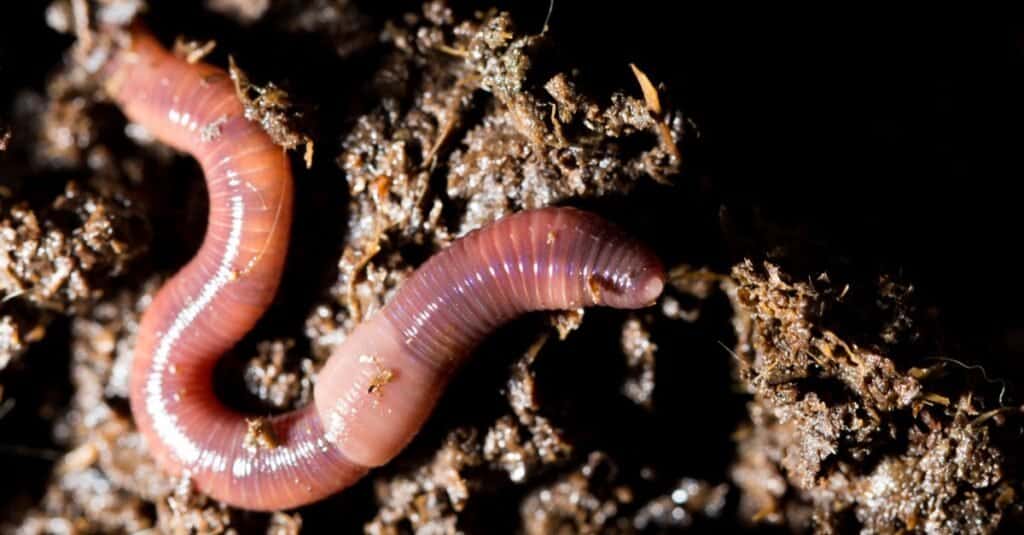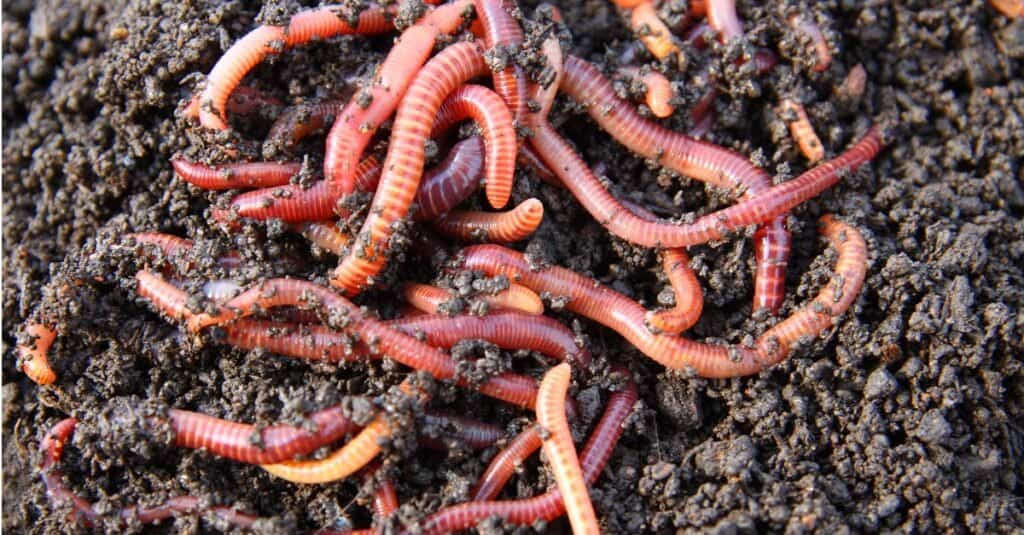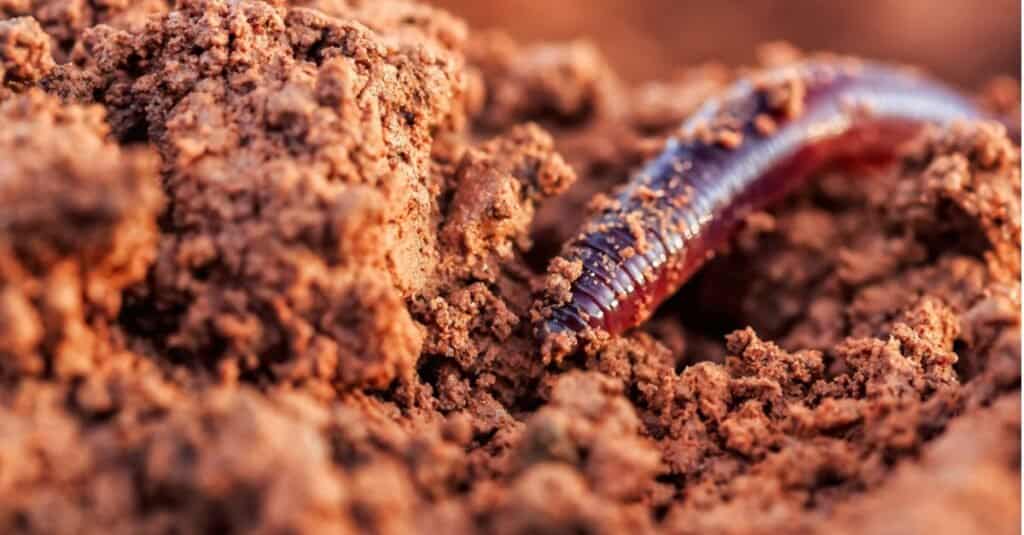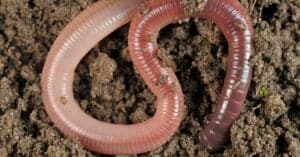How many hearts does a worm have? A good question! The answer to that question, however, can be a little complex since it relies on how you define “heart” or even “worm.” The number of hearts a worm has can range from zero to five to as many as 10. Although worms don’t have the typical human-like heart, they do have five pairs of aortic arches that operate similarly to the heart in humans.
In this article, we will answer the question “How many hearts does a worm have?” in more depth. We’ll also break down how worms work and how their other organs keep them functioning.
What Exactly is a Worm?
Let’s concentrate a little on the word “worm.” Biologically speaking, the term “worm” is no longer used in science. We now know that all non-arthropod invertebrates were categorized as “vermes” under Linnaean taxonomy, which is a collection of species that are really not closely related to one another.
Phylogenetically very unrelated species such as snakes, jellyfish, barnacles, and other parasites were included in Linnaeus’ initial categorization of “vermes,” which was based mostly on groups with homologous biological features. In the past, the taxonomic category “worm” served as a type of throwaway taxon; it is a collection of species that were left over but couldn’t be categorically separated into other groups. So, for the sake of this article, we’ll concentrate primarily on earthworms and how many hearts they have.
Understanding the Earthworm
The <a class="wpil_keyword_link" href="https://a-z-animals.com/animals/earthworm/" title="earthworm is an invertebrate animal, which is a member of the phylum Annelida and the class Oligochaeta. These animals are usually found in soil and are important decomposers in their ecosystems. They have a cylindrical shape and can be as little as a few millimeters or as long as several feet.
The lengthy, segmented bodies of earthworms are distinctive for being coated with tiny bristles called setae. These setae aid the worm in digging tunnels through the dirt. The muscles that allow an <a class="wpil_keyword_link" href="https://a-z-animals.com/animals/earthworm/" title="earthworm to move and burrow are distributed throughout its body’s several segments. The mouth and the brain are located in the front segment of the worm, while the anus is located in the back section.
The capacity of earthworms to regrow their damaged or destroyed body parts is one of their most prominent traits. An earthworm can frequently regenerate lost body parts, allowing it to live through injuries that could seriously harm or kill other animals. This makes them an intriguing topic for scientific study and has sparked a plethora of investigations into how animals regenerate.
How Earthworms Regenerate
If their tails are cut, almost all worms can regenerate them, and many earthworms can lose multiple segments of their head end and will grow back. However, for certain worms, the more segments that are removed, the less probable it is that they will completely recover. No matter how many segments are removed, most worms will always regrow a certain amount of their bodies.
When a worm is severed between the head and tail ends, the missing portions regrow to form two whole worms. However, occasionally a worm’s tail will grow additional tail segments in place of a head. The worm will live longer as a result, but only for a while, as it is unable to eat despite being able to absorb oxygen.
When a predator catches them, certain earthworm species may defend themselves by removing their tails. If captured, they simply separate their tails to divert attention away from themselves and elude the predator. Some composting worms will store their feces in their tail and simply drop the tail when it is full, kind of like a living trash can.
Similarities Between Worms and Other Animals’ Regeneration Methods
When it comes down to it, not all worms are killed instantly if you accidentally chop one with a shovel while gardening. Many will live, and some will grow new parts where they were lacking.
Although the capacity to generate new parts may appear uncommon, worms are not alone in this ability. Both crayfish and many sea stars can regenerate new limbs after losing them. If they are trapped by a predator, skinks and some other lizards can release their tails before growing new ones. Additionally, the Mexican axolotl salamander can regenerate nearly every component of its anatomy, including its limbs, heart, spinal cord, and brain.

If an earthworm (pictured) is cut in half, it can technically regenerate into two seperate worms if the conditions are right.
©schankz/Shutterstock.com
How Earthworms Reproduce
Because earthworms are hermaphrodites, they possess both male and female reproductive systems. Although they have the ability to self-fertilize, worms usually mate with other worms to reproduce. In order to reproduce, two worms must mate. This includes the exchange of sperm, which fertilizes the eggs of both partners and produces offspring.
Earthworms emit pheromones, which are chemical signals that can be recognized by other worms, to entice a partner. The worms position their bodies parallel to one another and face opposite directions once they have found a mate. Then, through the genital apertures on their ventral surface, they exchange sperm.
Earthworm Eggs and Juveniles
Each worm will construct a cocoon after mating that contains many eggs. The worm’s clitellum, a substantial ring of tissue situated close to the front of the worm’s body, secretes the cocoon material. Initially damp and fragile, the cocoon gradually becomes harder and forms a protective shell over the eggs.
The eggs inside the cocoon will grow into embryos. When they hatch, they will become young, immature earthworms. Depending on the type of earthworm, a single cocoon can give birth to anywhere between a few to over a hundred young.
Earthworms grow slowly, and it may take them many months to become sexually mature. They will go through various stages of growth and development throughout this time, frequently shedding their skin as they get bigger.
To sum it up, earthworms are hermaphrodites that mate with other worms to generate offspring. They create cocoons with several eggs within, which hatch into young earthworms. Earthworms grow slowly, and it may take them many months to become sexually mature. The earthworm’s reproductive system is crucial to their survival and to maintain their population levels. While cutting an earthworm in half can technically create two worms (a form of asexual reproduction), this is not the main way these creatures reproduce.
Earthworm Environment and Uses
Typically, earthworms are found in dark, wet settings like dirt, leaf litter, and compost piles. They are essential to the environment because they decompose organic materials and replenish the soil’s nutrients. Decomposition aids in fostering a favorable environment for plant growth. To put it simply, worms are extremely valuable creatures!
Various creatures, including birds, rodents, and other invertebrates, depend on earthworms as a source of food. They are often used as fishing bait. In some cultures, they are even occasionally regarded as culinary delicacies.
Earthworms come in a huge range of sizes and colors, with over 6,000 different species now recognized. While some are light or even translucent, certain species are a vivid red or pink. Earthworms are found all across the planet, from frozen tundra to tropical jungles.
Although earthworms are often seen as helpful critters, there are several situations in which they can turn into pests. Earthworms can harm crops in agricultural environments by consuming the roots of plants. Additionally, they have the potential to spread quickly and disturb local ecosystems. This typically happens if they are introduced to an environment with few predators and excellent habitats that are beneficial to earthworms.
An intriguing and significant group of invertebrate organisms, earthworms are essential to the ecology. They are renowned for their capacity to break down organic debris, regrow missing body parts, and serve as a source of food for several other organisms (including humans). Despite the fact that they can turn into pests, they are typically seen as helpful and are a vital component of many ecosystems all over the world.
So, finally, how many hearts do worms have? Let’s take a look.
How Many Hearts Does a Worm Have?
The amazing animals known as earthworms are crucial to ecology, but their body makeup is still pretty mysterious. These invertebrates’ numerous hearts are among their most intriguing characteristics. Earthworms have five different “hearts” or aortic arches, while most vertebrates only have one single heart. The blood is pumped throughout the body by these hearts, which are found in the worm’s anterior segments.
Because an earthworm’s circulatory system is closed, the blood is trapped within blood vessels and does not freely circulate throughout the body cavity. Each pair of the five pairs of hearts contracts and relaxes in a wave-like rhythm as they cooperate to push blood ahead.
An earthworm’s blood has a number of crucial uses. It delivers nutrients and waste materials throughout the body in addition to carrying oxygen from the respiratory surface (a.k.a. the skin) to the tissues and organs. Their blood also plays a role in controlling the pH and body temperature of the worm.
Compared to the hearts of vertebrates, the hearts of earthworms are simpler in both form and function. In the hearts of earthworms, there are no valves and no distinct chambers for the blood to flow through. A system of blood vessels connects the hearts, enabling unrestricted blood flow throughout the body. The hearts of earthworms are composed of basic muscle tissue rather than the specialized cardiac muscle cells found in vertebrate hearts, such as human hearts.

Earthworms (pictured) have five different “hearts” or aortic arches that pump blood throughout their bodies.
©iStock.com/Mik122
How Earthworm Hearts Pump Blood
Earthworm hearts are nevertheless able to efficiently pump blood throughout the body despite having a more basic shape. They are particularly well-suited to the biological needs of earthworms, which need a lot of blood flowing through them to maintain their physiological functions and digging activity. To put it simply, they need five hearts to accommodate their very active lifestyle!
Earthworms have numerous hearts as a result of an adaptation that developed to fulfill their particular biological demands. Typically, earthworms are found in dirt, which can be compact and challenging to navigate through. The numerous hearts’ high blood flow rate contributes to giving the muscles the oxygen and nutrition they require to move through the soil.
There has been a great deal of scholarly investigation into earthworm hearts. Researchers have discovered that the heart’s contraction and relaxation are coordinated by a complicated network of hormones and neurons. Earthworm hearts have also been investigated by researchers in order to gain crucial insights into the mechanics behind circulatory function in other species.
To reiterate, a worm’s blood is pumped throughout their bodies by up to five separate hearts. Despite having a more straightforward shape than the hearts of vertebrates, these hearts are nonetheless able to deliver blood and oxygen to the body and brain effectively.
How Many Organs Do Worms Have?
Having five hearts is pretty unusual, so how many other organs or organ systems do worms have?
Worms occupy damp soil, excavating tunnels to aerate it for plants and converting vegetation into nutrients for the roots of plants through digestion. Earthworms carry out all of this activity via their very basic organ systems.
Worm Respiratory System
Unlike mammals, earthworms don’t have lungs. Instead, they breathe directly through their skin by dispersing air. While carbon dioxide leaves, oxygen enters. They prefer wet soil and rarely venture outside in the scorching sun since their skin must be moist for the gas diffusion to function correctly.
Worm Circulatory System
As we previously discussed, an earthworm has a closed circulatory system that employs vessels to transport blood throughout its body. Five aortic arches (or “hearts”) that act as pumps are distributed throughout his body. Its body’s dorsal and ventral vessels transport blood in opposite directions, from the rear to the front, respectively. Smaller capillaries aid in the blood’s ability to collect nutrients, oxygen, and carbon dioxide and transport them to the appropriate parts of the body.

Earthworms (pictured) need five hearts or aortic arches for adequate blood flow, as their bodies work hard to dig through tough dirt.
©iStock.com/Christian Dahlhaus
Worm Muscular System
The earthworm possesses a robust muscular system for such a little species. Smaller muscles that circumambulate the body in segments are activated by lengthy muscles that run along its length. The earthworm’s body is covered with waves of circular muscles that contract inside and extend outward.
Worm Nervous System
Ganglia, a type of nerve cluster found in earthworms, are joined to a nerve cord that runs the length of the worm. To inform the muscles to contract or the gizzard to begin grinding food, for example, the ganglia carry electrical signals from the nerve cord to a variety of different systems.
Worm Digestive System
The earthworm’s body experiences essentially straight-line digestion. It swallows food until it goes into the gizzard, where it is ground up by small stones and then sent to the intestines. The trash is transported to the excretory system while the nutrient-rich fragments are absorbed in the intestines.
Worm Excretory Mechanism
The earthworm’s intestines transfer waste via the anus and out of the worm. Castings, the name for this type of dung, are used as a popular type of plant fertilizer. Excretory cells, on the other hand, take part of the waste and transport it to the skin. The mucus that is released from this waste through the skin keeps the worm’s skin wet.
Worm Reproductive System
As was previously noted, earthworms mate and reproduce sexually. They produce egg sacks that can have hundreds of eggs.
Isn’t the biology of worms fascinating? While worms have up to five hearts, most animals tend to have just one to keep their bodies growing. Perhaps with time, scientists can learn more about circulatory systems by continuing to study the wondrous, weird worm!
The photo featured at the top of this post is © D. Kucharski K. Kucharska/Shutterstock.com
Thank you for reading! Have some feedback for us? Contact the AZ Animals editorial team.






